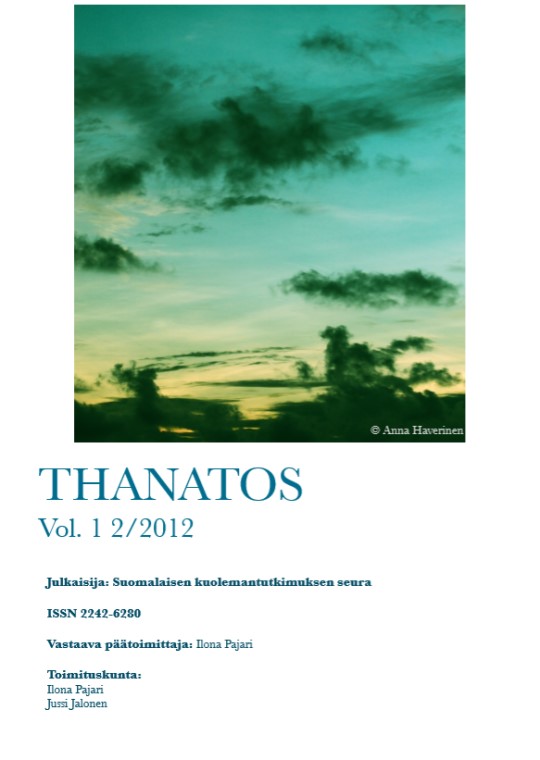Kuolleena syntynyt lapsi Suomen evankelis-luterilaisen kirkon kirkkokäsikirjoissa 1694 – 2003
Abstract
Stillborn children were surrounded by silence for a long time. In many cultures in the world, the issue of having a stillborn was seen as something awkward; not a proper topic to speak about, not to mention to mourn. Because a stillborn child had not become a member of the community in a passage rite of welcome (initiation rite), communities could not participate in a passage rite of goodbye either. In Christianity, baptism could be seen as a passage rite of welcome. In many churches, for example in the Roman Catholic teaching, baptism is also believed to be essential for salvation. This has influenced attitudes toward stillborns in the Western World.
This article illuminates how stillborn children are regarded in the funeral service orders in Finland. The focus of my article is in the funerals of the Evangelical Lutheran Church of Finland, because it has been the state church of Finland, and even today, almost 95% of Finns have a church funeral, including a large number of people who are not members of the church.
The data for the present study were collected by qualitative content analysis from six service books of the Lutheran church of Finland (years 1694, 1886, 1913 1963, 1984 and 2003). The service book from 1694 guides priests to conduct a simple ceremony at the grave, including mere throwing of the sand, the Lord’s Prayer and the Priestly Blessing. This guideline was in use for over 200 years. In the next service book (1886) the orders are almost the same. In the service book from 1913, a funeral service for stillborns has been left out completely. The service book from 1963 includes a short and simple service to stillborn funerals. In the service book from 1984 this service has been left out, but the basic order of a funeral service is suggested to be applied to funerals of stillborn children. The service book from 2003 includes the same instruction, but it also contains a special prayer for stillborns. The prayer includes a promise according to which the baby “is safe with God among His angels.” To conclude, there has been a major change in acknowledging stillborns in the Church of Finland within the past 500 years: their status has risen from outsiders of graveyards to children of God.
The changes in the service books suggest in a very revealing way how the attitudes towards stillborn children have changed not only in the church but in the Finnish society as well. There have been major changes in the society decreasing the authority of the church and its significance as a community (e.g. urbanization and scientific revolution). Also, in the 20th century the significance of communities in general has decreased in the Western World, and it has offered more space to encounter the phenomenon from an individual perspective. As the significance of communities has decreased, the layman’s point of view had to be taken more seriously in the practices of the traditional communities, such as funeral ceremonies of stillborn children of the Evangelical Lutheran Church of Finland.
Downloads
Published
Issue
Section
License
Copyright (c) 2023 Juha Itkonen

This work is licensed under a Creative Commons Attribution-NonCommercial-NoDerivatives 4.0 International License.





